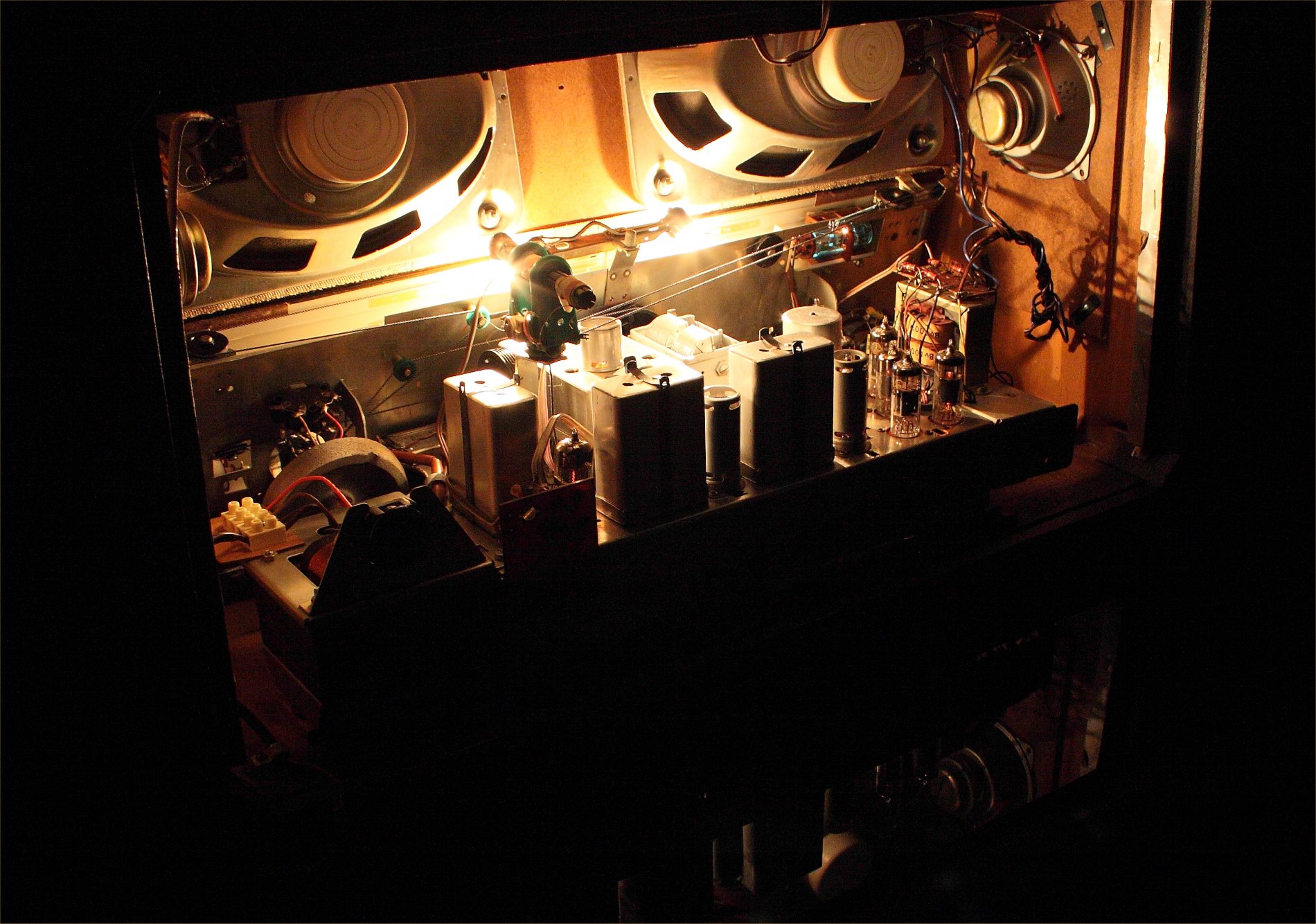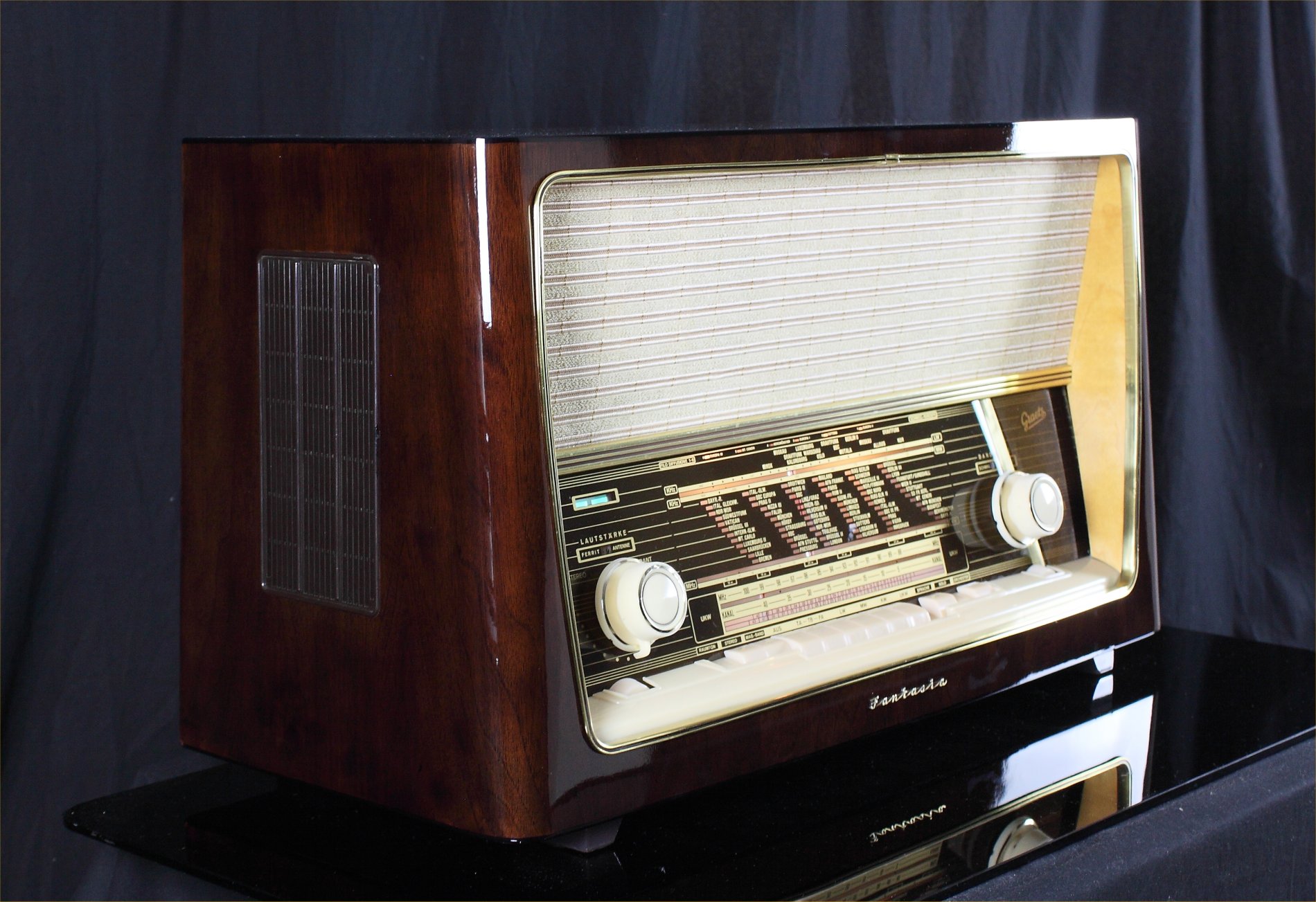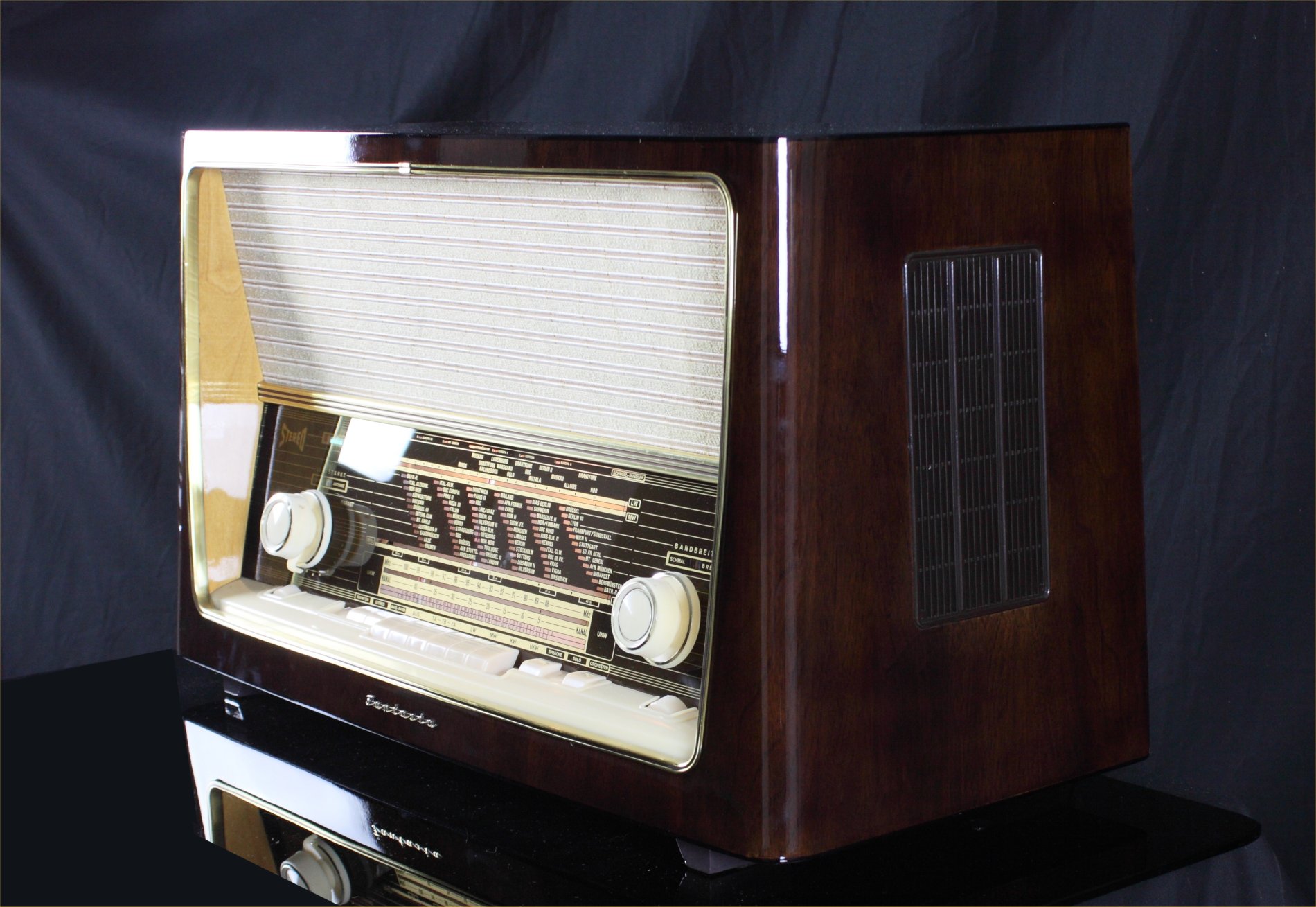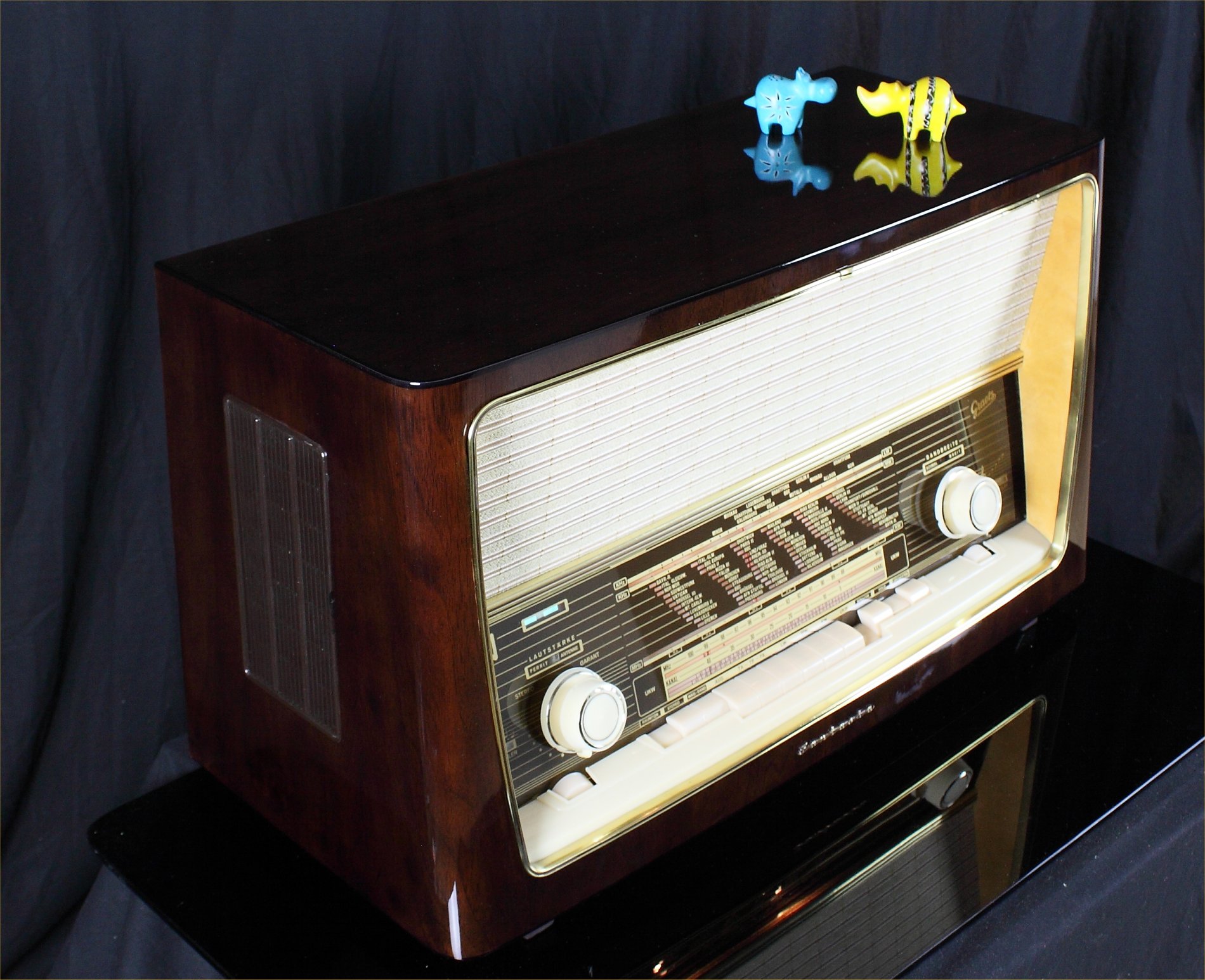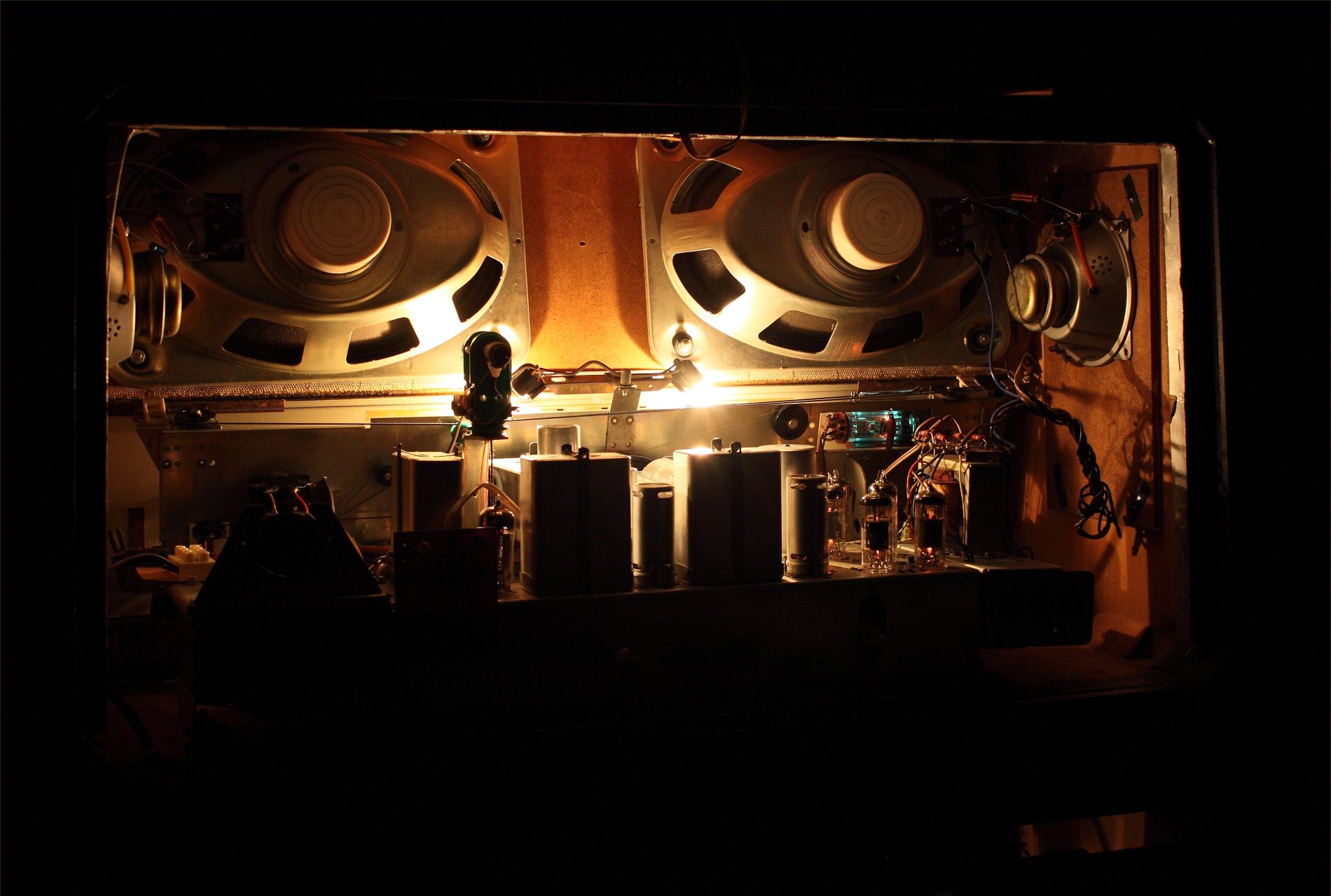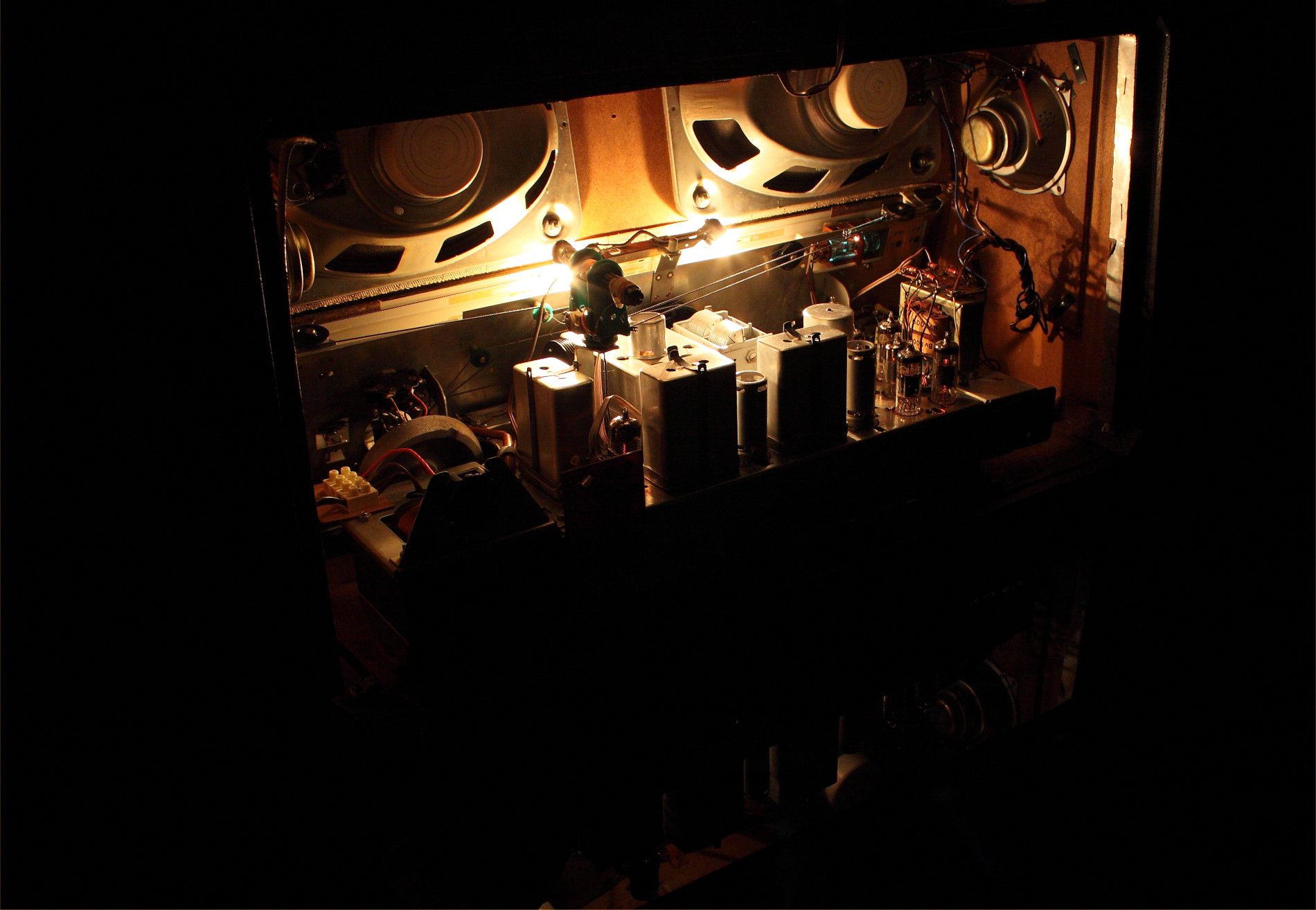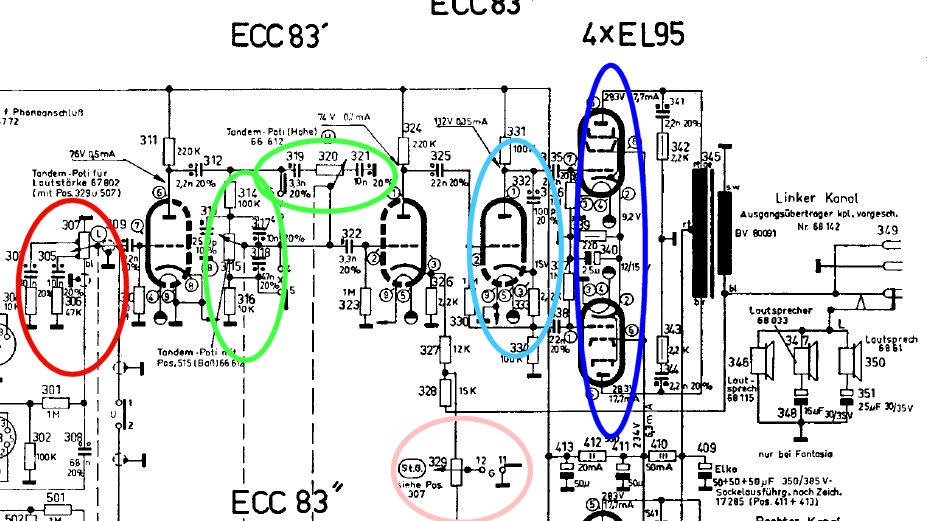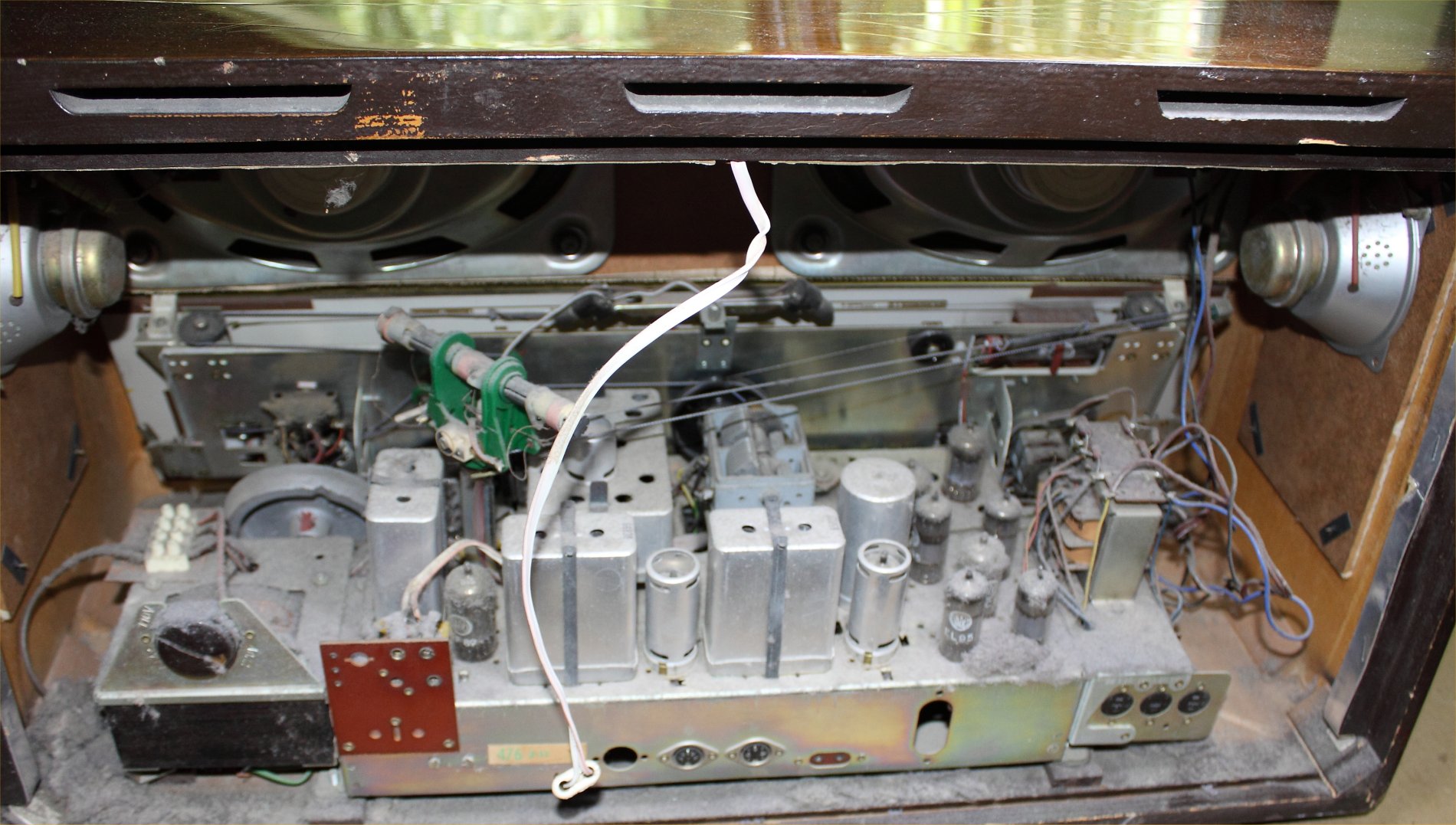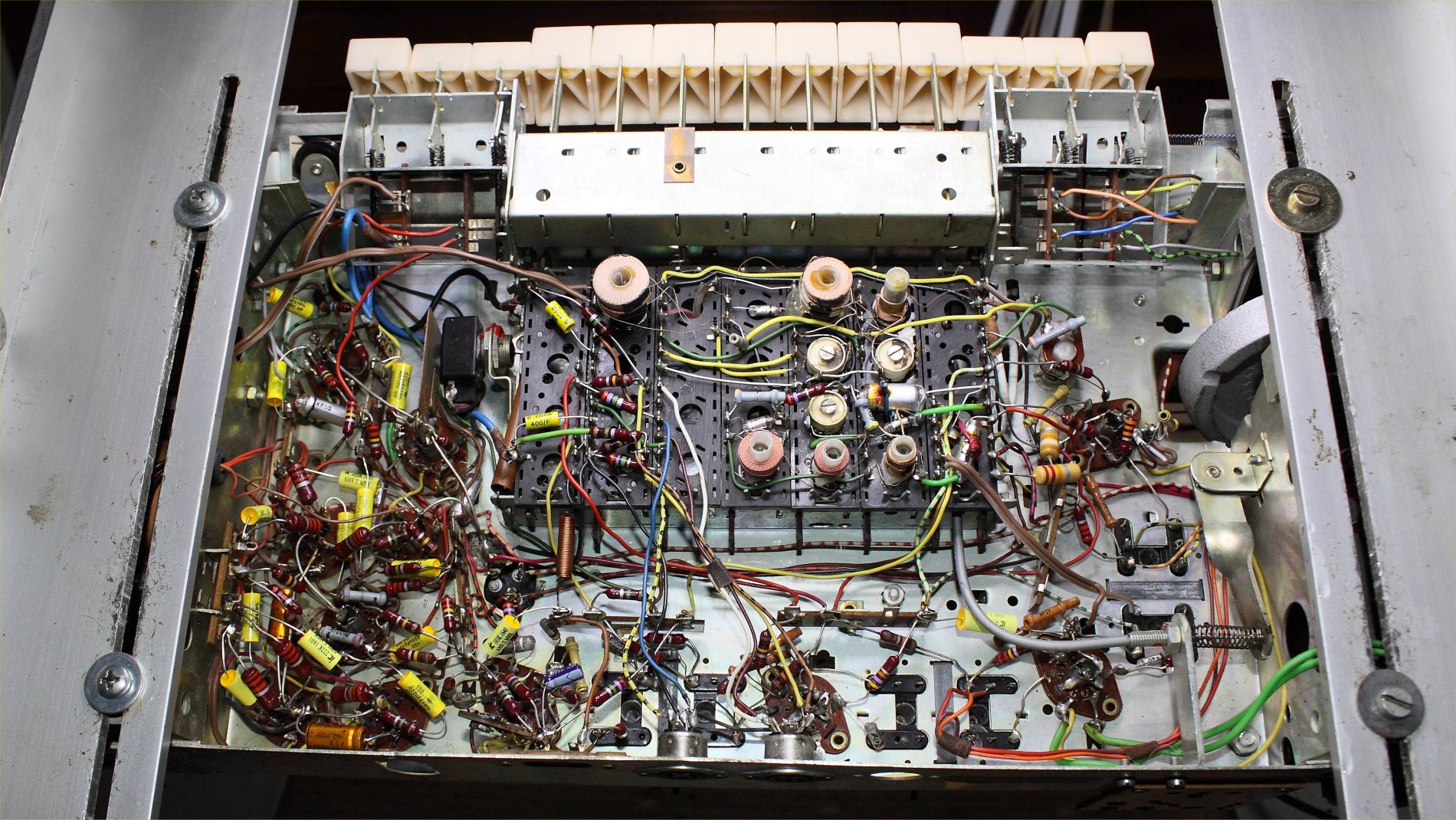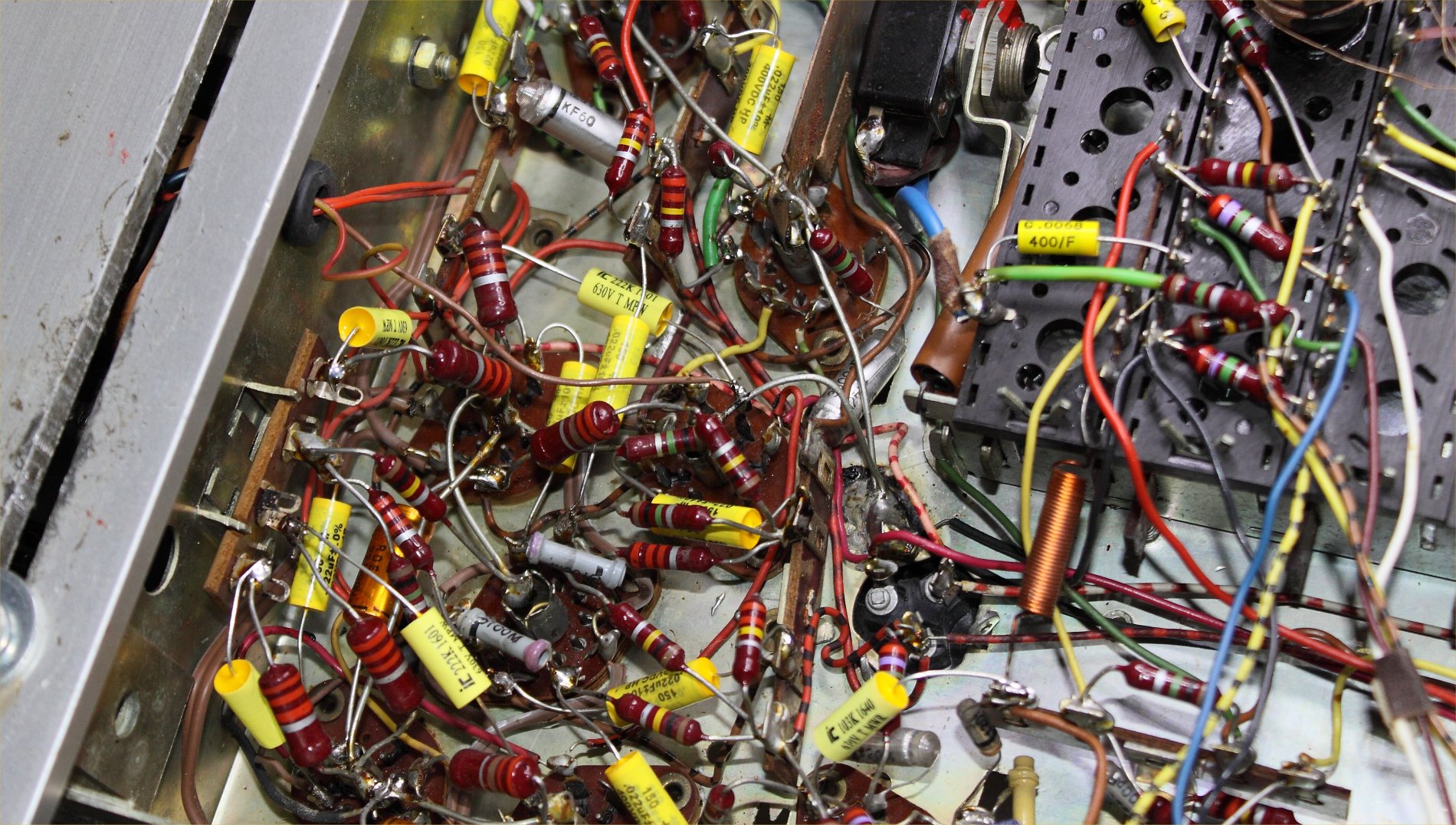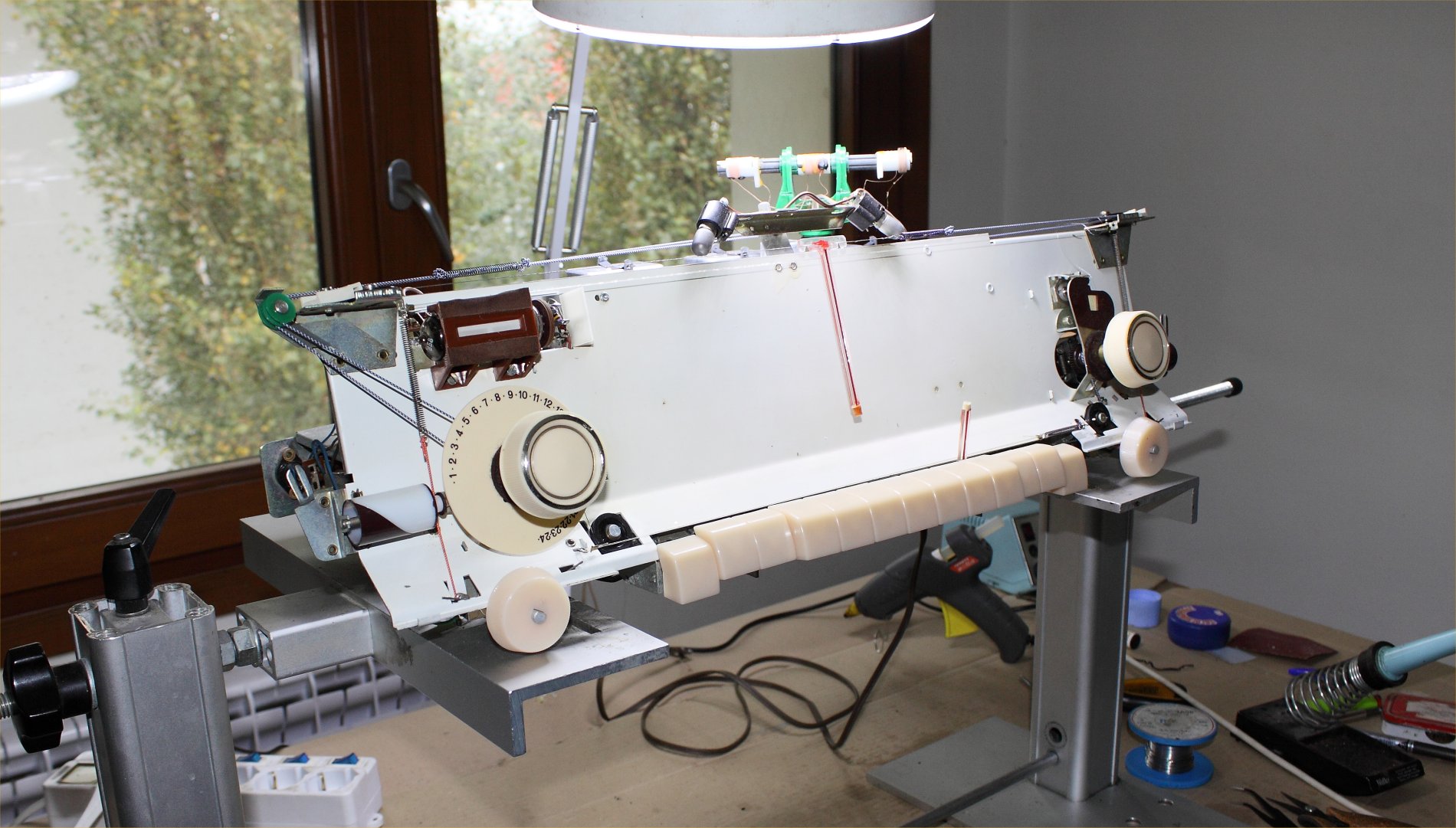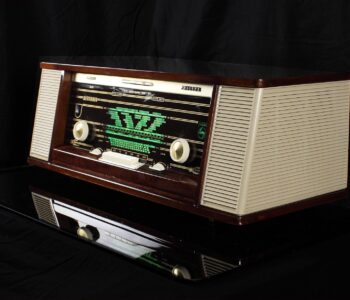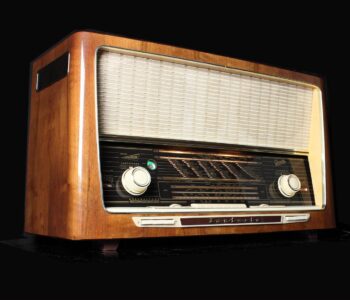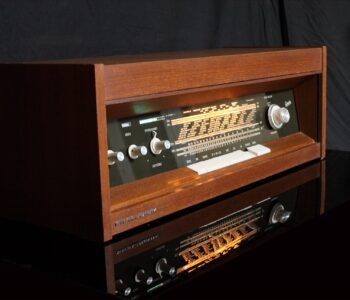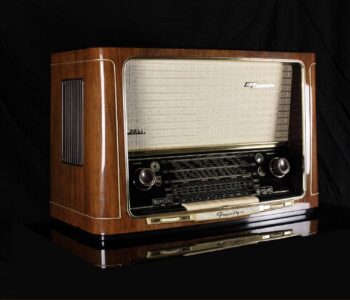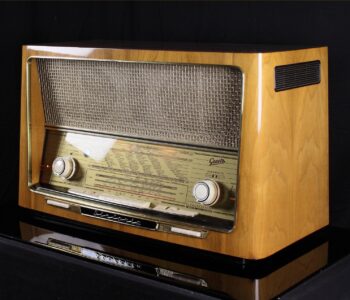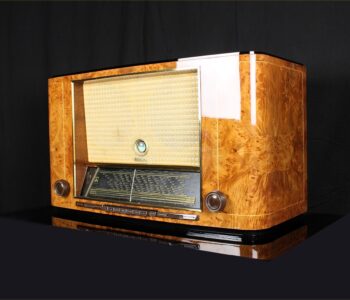 162w - en
162w - en
Graetz Fantasia 922 Luxus – Stereosuper – en
- by giovanni
GRAETZ FANTASIA 922 LUXUS – STEREOSUPER
GRAETZ FANTASIA 922 LUXUS - STEREOSUPER
Graetz is one of the most prestigious German radio manufacturers. The Graetz Fantasia 922 Luxus - Stereosuper was the flagship model in 1960.
Graetz devices have always been appreciated for their refined and elegant finish, as much as for the innovative acoustic solutions and their respective patents.
In designing the line of their flagship model, Graetz designers chose a classical and statuary kind of elegance.
The cabinet is in dark wood and the paint is very shiny. The sides with their variable width make the profile look slimmer. The base looks wide and solid, without making cabinet look heavy.
The strongly embossed texture of the canvas covering the speakers, the golden lines highlighted on the dark display and the light knobs make the visual impression even more pleasant and lively.
The stylistic attention, as in Graetz's tradition, is very accurate.
The Amplifier Section is the best that could be imagined at the time.
The Volume potentiometer has two sockets for loudness (red). As known, in fact, when listening at a very low volume the bass frequencies and the treble are not perceived with the same sound intensity as the mid, which appear to be predominant.
The loudness modifies the response of the preamplifier stage specularly to the Fletcher-Munson curves. This allows to maintain the correct perception of the sound, even at low volume levels.
The Tone Control was designed using the complex Baxandall circuit (green). The advantage of such circuit is its high precision, while the disadvantages are its cost and construction complexity. Much simpler and cheaper circuits were normally used. But not in this device.
The Balance (pink) is inserted into the feedback circuit. It works by changing the percentage of signal that is downgraded/relegated to each of the two channels. This signal is in inverted phase compared to the main signal. In this way, by acting on the balance, the level of one channel is lowered in comparison with the other and, at the same time, the distortion is reduced.
By turning the knob at the ends, this type of balance does not cause a reset of the volume of the channels as in the modern balance control, but it is to be considered a “fine” adjustment of the level between the two channels.
The Phase Inverter (blue) is of the Catodina type. As an advantage, it is very well-balanced. This circuit is still used in hi-fi amplifiers.
The Push-Pull section (blue) uses two separate tubes (EL95) for each channel. The EL95 are pentodi expressly designed for audio use.
In the receivers, even high-class, provided with Push-Pull output power, bulbs were normally used, which enclosed multiple valves (ELL80, ECLL800). In this way, space and components were saved. But if one of the pentods inside thei complex tube decays differently, the reproduction is altered, with an exponential increase in the crossover distortion. These multiple tubes, once common, are rare and expensive today, so the replacement can be economically significant. The use of separate pentods, as in the Graetz Fantasia 922, eliminates this problem, and it is possible to select pairs of EL95 with the same characteristics.
Only the Graetz Fantasia 922 and 1022 and the Telefunken Opus 2430/2550 use 4 x EL95 in the stadio finale.
The Tuner Section is also very well taken care of.
The most interesting feature is the high selectivity of this device, due to the twin IF stage. The two EF89 pentods and the numerous IF transformers, in fact, are visible in the photos.
In FM an additional transformer has been implemented, accordato all'interno del convertitore in order to make more stable and insensibile ai disturbi the reception of such frequencies.
Finally, the L0udspeakers set.
The Graetz 922 Luxus features 6 loudspeakers. Four are placed frontally and two on the sides.
The four front loudspeakers are two tweeters and two oval wideband. The tweeters are placed in front of the wideband, on the same axis. This particular arrangement has the great advantage of making the origin of the sound close to that produced by a point source.
This characteristic corresponds to a very linear scatter diagram, and therefore to a much more regular realistic sound image than if the tweeters and the woofers were placed side by side.
The two loudspeakers placed on sides are, at such power level, the mid / tweeters, and allow a balanced listening from any position with respect to the radio, frontally or sideways.
This last feature makes the device very enjoyable as for daily listening. You will no longer want to turn on the HI-FI system ...

-
BLUETOOTH
Bluetooth receiver embed
-
MULTI PLATFORM CONNECTION
Each radio is equipped with a cable for connection to any digital device.
TUBESOUND IMPROVEMENT
- Bluetooth receiver embed - The unit is equipped with a BLUETOOTH receiver powered directly by the receiver power supply. This makes it possible to control the amplifier from any external digital device as an IPAD, a Smartphone, or a sophisticated multimedia station. So you can hear your preferred web station or your lossesless file without cables on the room. Wireless Receiver can be equipped upon requests.
- Multi Platform Connection - A customized adaptation cable to connect any digital device as Iphone, Smartphone, Laptop, CD Player etc. will be provided with this radio. This special cable suits the different impedances between the modern equipment and the receiver. Furthermore the two stereo channels flow into one without increasing the load to the input unit.

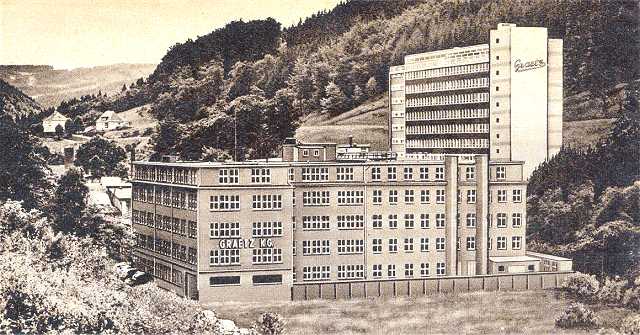
HISTORY
The Ehrich & Graetz metalworks was a factory established in 1866 in Berlin by Albert Graetz (1831–1901) and the tradesman Emil Ehrich (died 1887) under the name "Lampen-Fabrik Ehrich & Graetz OHG" (E&G).
By 1897 the firm was controlled by Albert's sons, Max Graetz, and Adolf Graetz. The company grew rapidly, and in 1899 factory complexes were built in Berlin, in the United States, France, the UK, and Bombay.
Around 1910-1916 Max Graetz developed the famous Petromax Lantern. Around 1925 the factory also produced radios, and other electrical appliances under the name Graetzor.
In the Second World War, just as in the First World War, the company was part of the war industry. With the use of forced laborers from France, Russia and the Netherlands the company made huge gains in production.
At the end of April 1945 the factory was claimed by the Russian army.
In 1949 the firm became part of the "peoples" program, "VEB-VolksEigenerBetrieb" and since 1950 "VEB Fernmeldewerk, Berlin Treptow (RFFT)." VolksEigenerBetrieb, means that the factory was owned by the people for the people (Communism)
In 1948 Erich, and Fritz Graetz founded a new company in Altena, Germany known by the name The Graetz Firm, which was successor to the lost family company in Berlin. The new company produced mainly radios and televisions.
In 1961 the company was then sold to Standard Elektrik Lorenz (SEL) AG, but since 1987 has been to the present owned by the Finnish company Nokia.
MAIN FEATURES
Year of production: 1960/61
Superheterodyne IF 460/10700
8 AM Circuits
13 FM Circuits
Wavebands:
Medium Waves(OM), Long Waves (OL)
Short waves (OC), FM (UKW)
Loudspeakers:
2 Elliptical mid-woofers
4 Cone mid-tweeters
Dimensions (LHD): 680 x 395 x 310 mm / 26.8 x 15.6 x 12.2 inch
Net weight: 17 kg / 37 lb 7.1 oz
13 Tubes: ECC85, ECH81, 2 x EF89, EM84, EABC80, 3 x ECC83, 4 x EL95


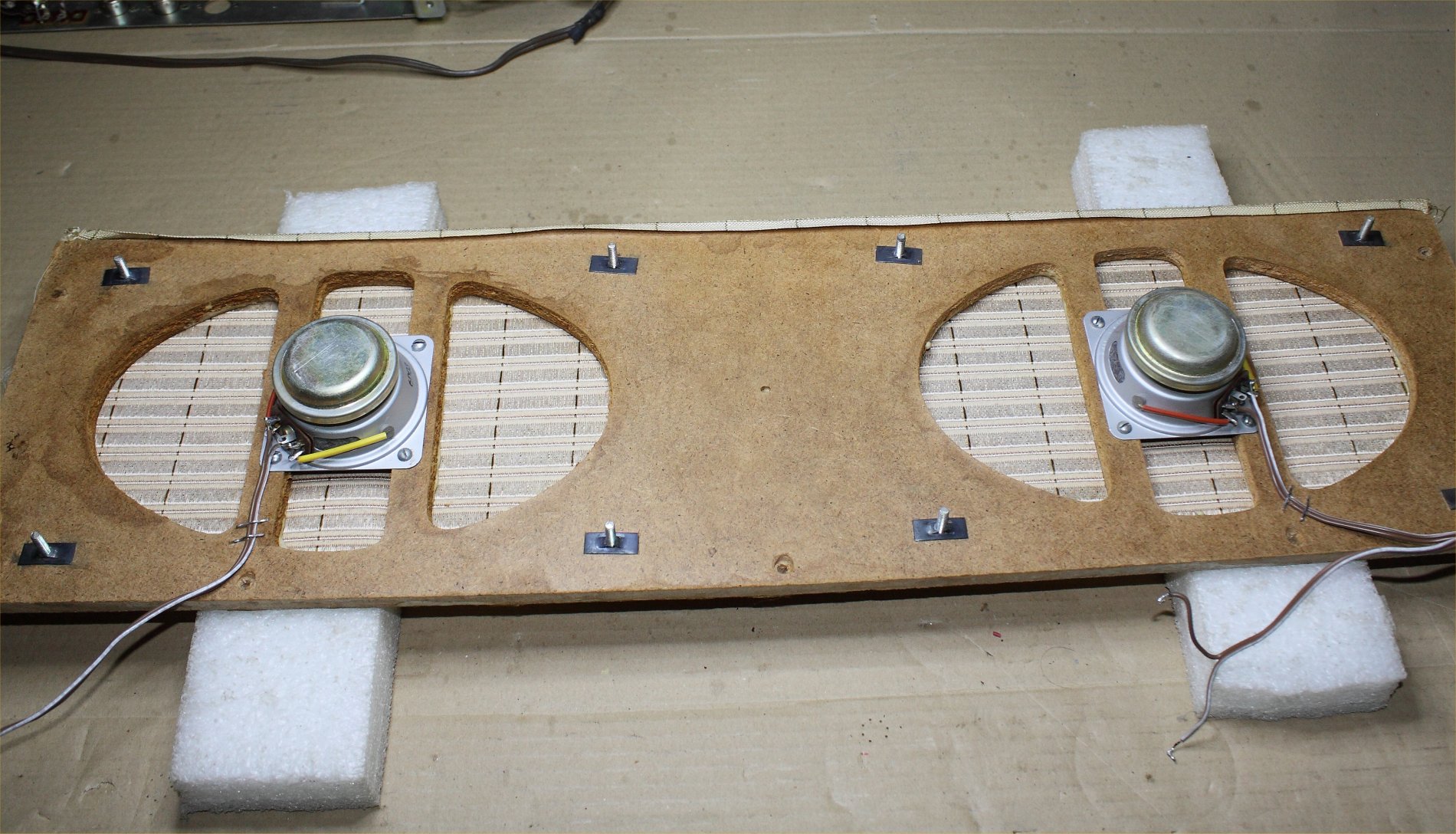

LOUDSPEAKERS
As previously mentioned, the most luxurious model produced by Graetz in 1960, the Fantasia 922, features 6 permanent magnet speakers.
The low and middle notes are reproduced by two large conical speakers, elliptical 26x17 cm.
High-pitched notes are reproduced by four cone loudspeakers. Two measuring 10 cm and two 6cm.
From the acoustic point of view, the interesting thing is not only the number of loudspeakers, but also their placement. The two 6 cm tweeters, in fact, are attached to the frontal Mid/Woofer, in a concentric position.
This is always my favourite placement and it is used in many of the best modern diffusers, such as KEF, TAD and Tannoy and many more.
The main advantage of a coaxial is the linearity of the off-axis response, both on the horizontal and vertical plane.
With the traditional positioning of the loudspeakers, the mid/woofer next to the tweeter, the off-axis listening is consistently disturbed by the phase cancellations caused by the length differences of the route between the two drivers.
The 3D graphics on the side display the measurements off the vertical axis of a box with coaxial loudspeaker KEF LS50 and one with traditional positioning of the YG Anat III. The difference is noticeable. (source: www.acousticfrontiers.com )
While frontally such an excellent configuration was used, what was done laterally is no less. In fact, on each side was installed a cone tweeter, protected by a metallic dome, Isophon HS10.
This loudspeaker has a very wide frequency response, from 1.000 to 20.000 Hz. So that all frequencies with pretty strong directivity features are reproduced also laterally.
The response to low frequencies is entrusted to the big frontal elliptics. In fact, low-frequency waves – as they are not directive by nature – do not need lateral loudspeakers in order to be perceived.
With this set of loudspeakers placed as described, the response is clearly quite linear from all angles, frontally, laterally and three-quarter.
As they are loudspeakers with an Alnico magnet, they are very efficient. The 7 Watts of each of the two channels are transformed into a noticeable acoustic pressure.
To provide a reference, during the listening at “normal” volume, not bothersome, a 0,2 Watt power delivery on the loudspeakers is measured.
The sound power is thus amply sufficient to sonorize even large environments.
The use of two separate Mid/Woofers has another advantage. The cones have less inertia compared to a larger single cone. In this way, the dynamic response is quick, and the lows are curbed and without resonance.
This feature allows to make the most of the AUX-in with lossesless digital files or CD, providing a brilliant reproduction rich in dynamism.

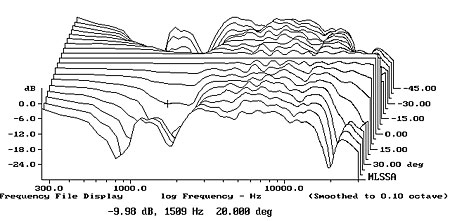
KEF LS50
vs.
YG Anat III
(fonte: www.acousticfrontiers.com )

SOUND CONTROL BUTTONS
Three keys are collected to the left of the main keyboard. The first two indicate respectively:
Raum(klang)Ton - Surround - The appliance works in MONO. It should be used when any of the keys LW, MW, SW, UK are pressed
Stereo - The appliance works in STEREO. It should be used when any of the TA, TB buttons are pressed.


SWITCH TO SAVE THE MAGICAL EYE
The third key to the left side of the main keyboard is used to turn off the magic eye to avoid unnecessary consumption.
It must be used when the TA or TB keys are pressed and when you are tuned to a station in a stable manner and then there is no longer any interest in checking the correct centering.
Mag(isches)-Band – turns the Magical eye off

EQUALISATION BUTTONS
The Klangregister (Musical Register) group also consist of three buttons, which are very intuitive.
Sprache - Voice
Solo - Solo
Orchester - Orchestra
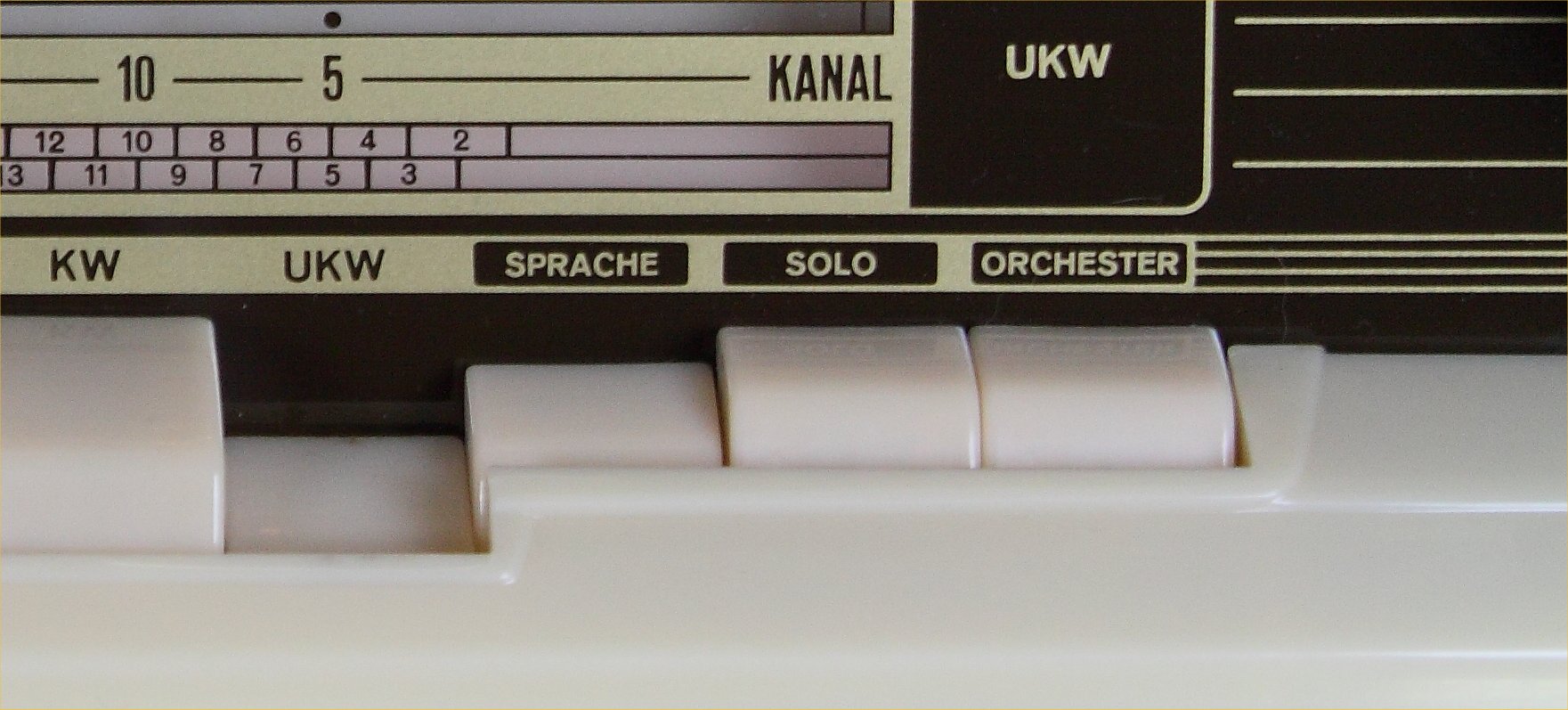
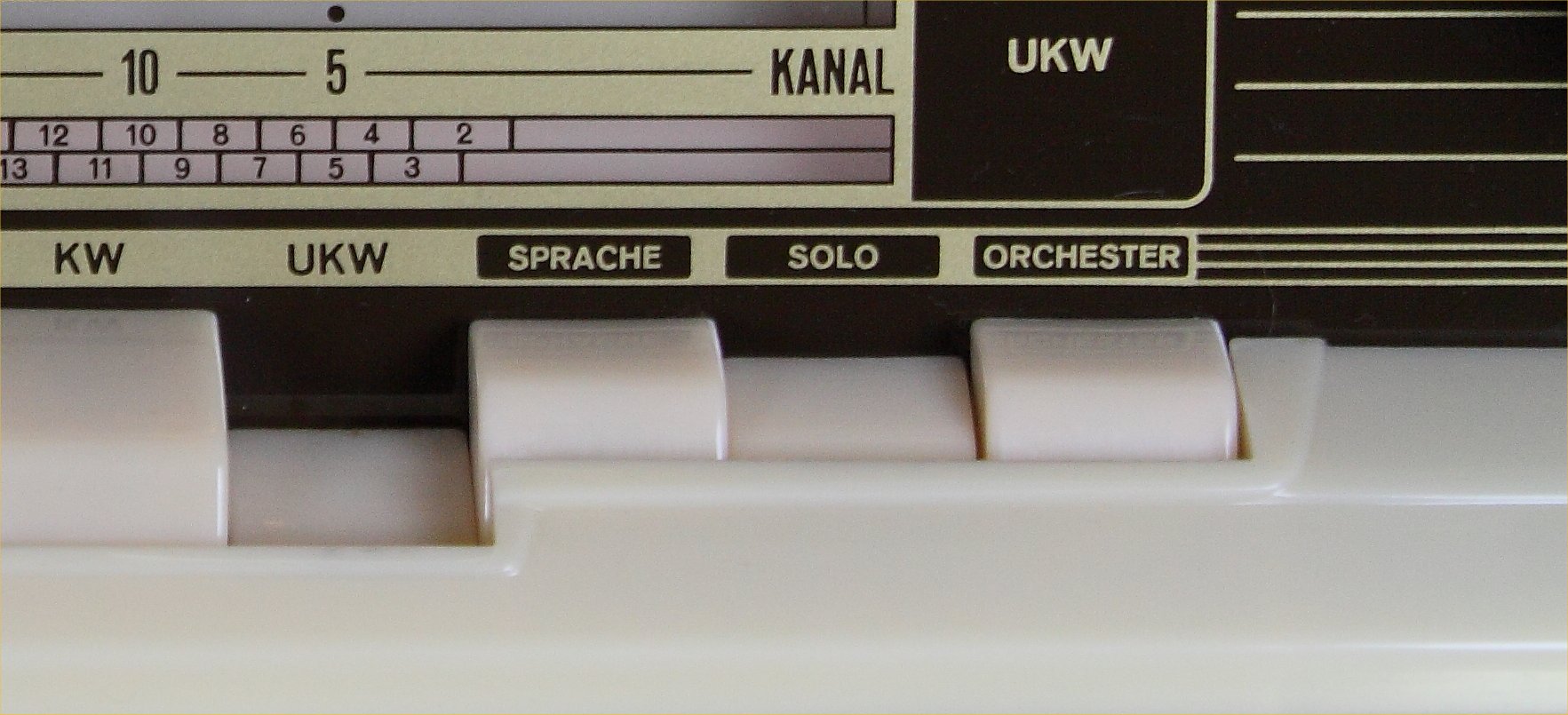
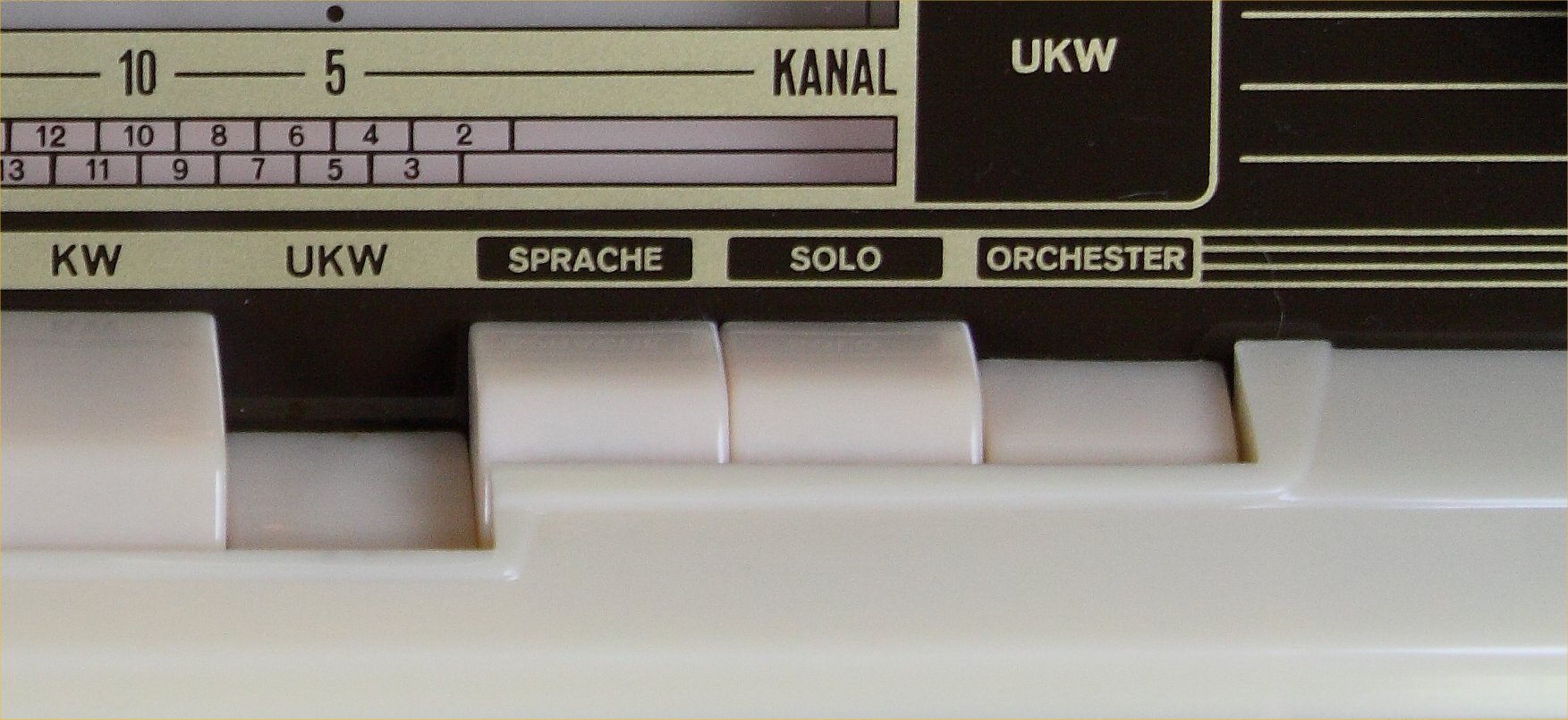
TONE CONTROL WITH LEVEL INDICATION
The tones control system is very efficient. Above the large tone control knobs there is a band that lights up gradually indicating the emphasis on the band on which it acts.
By pushing any of the Klangregister buttons, the tone-controls are excluded, since the frequencies connected with the chosen button are enhanced.
For this reason, the lights that enlighten the scale which indicates the tone-control position are turned off, too. They can be turned on again by pushing the Raumklang button and switching back to the manual setting of the favourite response curve.
BASS MAX

BASS FLAT

BASS MIN

TREBLE MIN

TREBLE FLAT
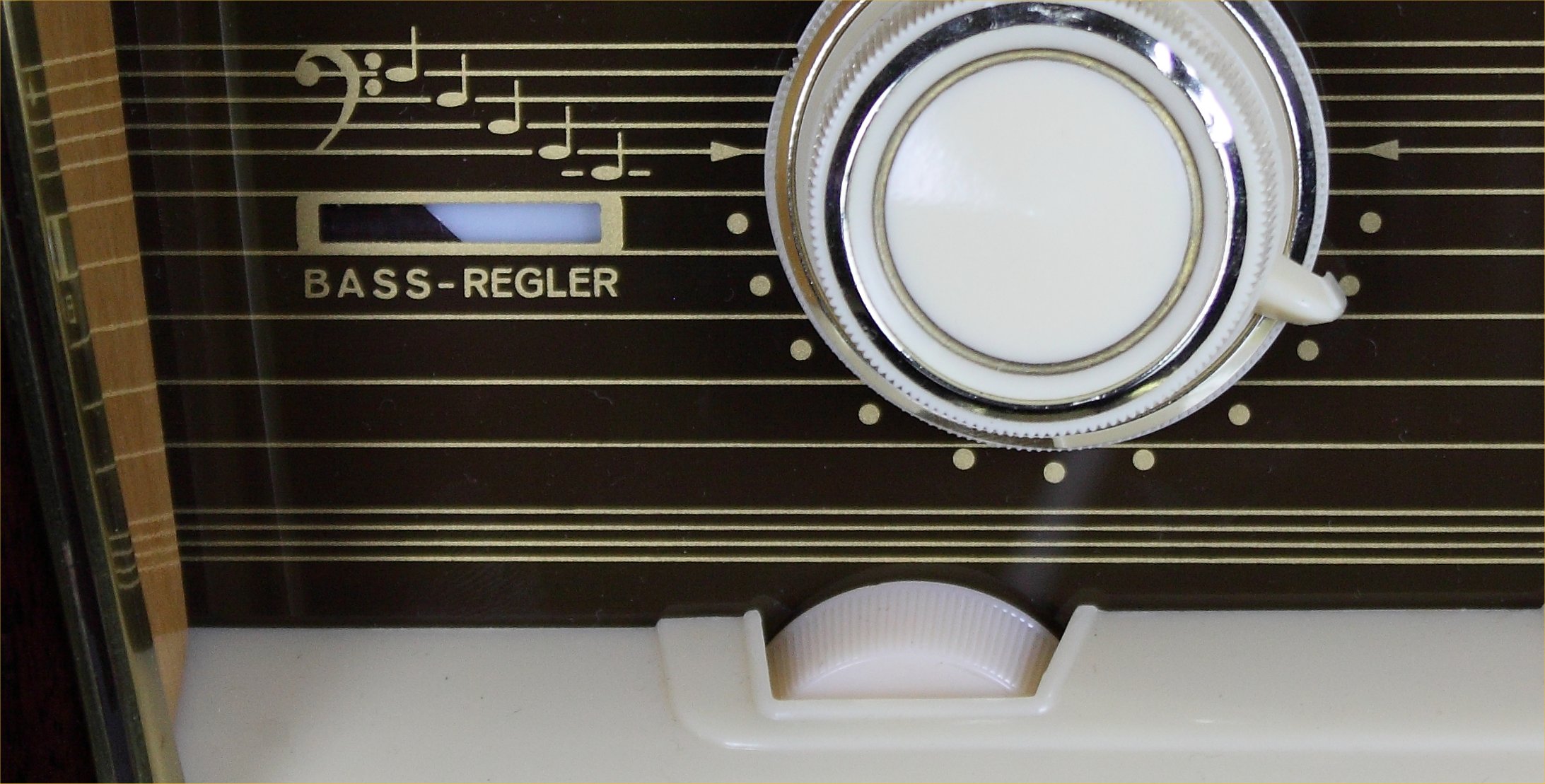
TREBLE MAX

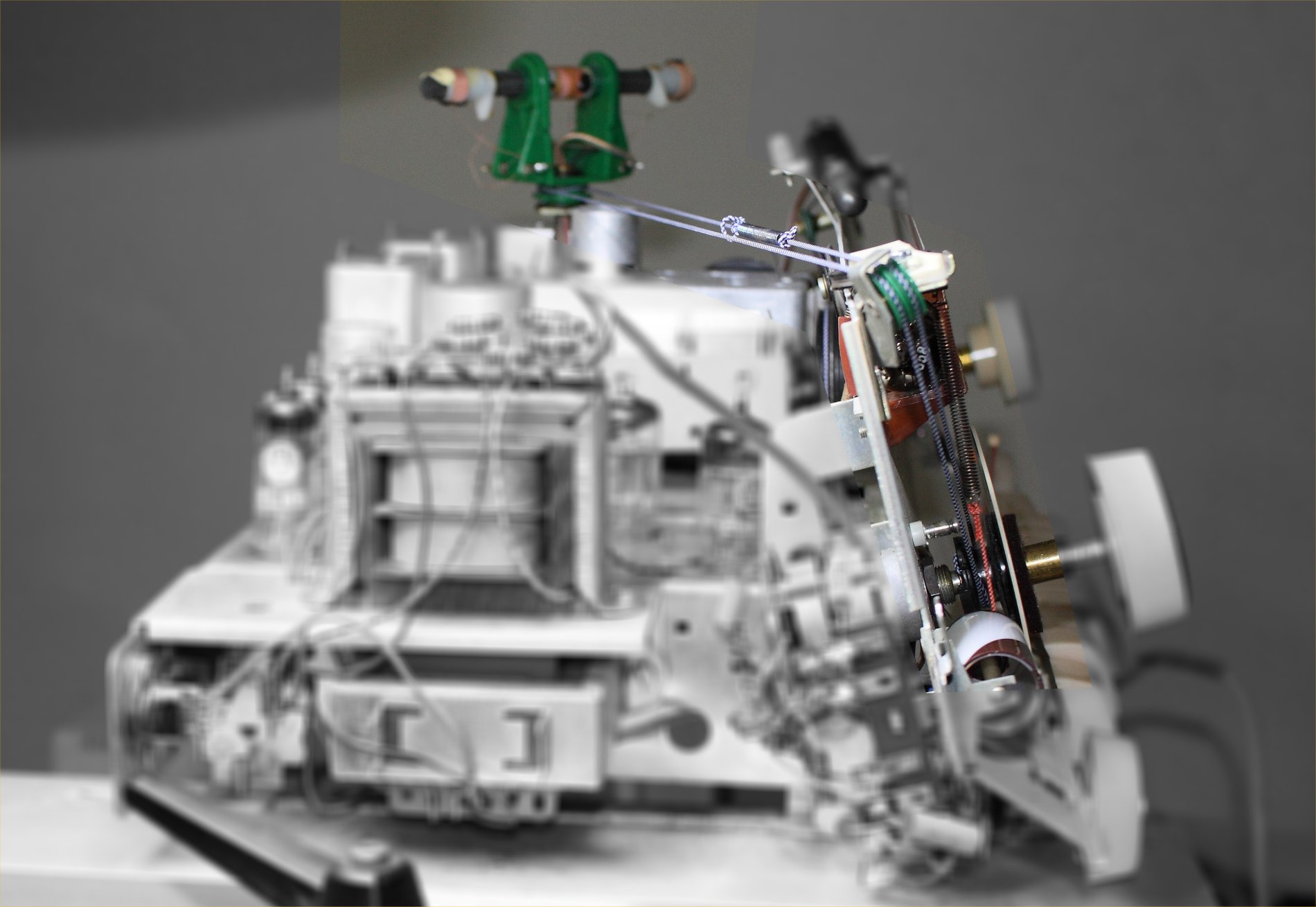
AERIALS
Inside the cabinet there is a dipole for FM reception and a ferrite rotating aerial for AM reception.
Ferrite aerial can be rotated from the outside to achieve a perfect tuning of the device in the AM.
In this picture you can see the rotation mechanism, and the aerial position indicator.
The reception sensitivity with internal aerials is very good. This unit was in fact produced when there were not many radio stations, and those available were far from each other.
Using an external aerial sensitivity is further increased.


TUNING INDICATOR
The magic eye has of course been replaced.
SEPARATE CONTROL TUNING BETWEEN AM AND FM
The unit is equipped with mechanisms that keep AM and FM bands separate.
The tuning knob is single, but a selector switch commutes between cable systems (all steel made) and pulleys dedicated to each band.
The movement is transferred to both mechanisms with a system of pulleys and separated gears.

Keys to be pressed when the turntable or AUX1 is used. With this source it is possible to listen in stereo

Keys to be pressed to listen to the Medium Waves band

Keys to be pressed when the tape recorder or AUX2 is used. With this source it is possible to listen in stereo

Keys to be pressed to listen to the Short Waves band

Keys to be pressed to listen to the Long Waves band

Keys to be pressed to listen to the FM band
CONTROL PANEL

Left from the top:
- The Magic Eye that indicates the perfect tuning of each station.
- The antenna position indicator.
- The volume control (with built-in loudness)
- Axially this balancing.
- The rotation command of the ferrite antenna is still in axis.
- The bass control knob
In the center:
The AM display for long, medium, short waves and the FM display.
Right from the top:
The BANDBREITE indicator (High / Low selectivity in AM)
The tuning knob, whose movement is very pleasant being supported by a large flywheel
On the same axis there is a selector to control the selectivity in AM.
-The treble control knob.
The keyboard:
RAUMTON - Surround - Mono
STEREO - Stereo
MAG.BAND - Magic Eye
AUS - Switch off
TA - Turntables
TB (TA + FA) - Recorder
FA - Ferrite antenna for Medium and Long Waves
LW - Long Waves
MW - Medium Waves
SW - Shortwave
UKW - FM
SPREACHE - Voice
ONLY - Solo instrument
ORCHESTER - Orchestra

REAR SIDE
Output for external speakers.
Socket for recorder (tonbandgerat).
Turntable input (Tonabnehmer)
AM and FM aerial inputs and ground socket
RESTORATION STEPS
THE USUAL AMAZING LAST IMAGE
